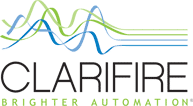The extensive suspension of elective surgeries due to the COVID-19 pandemic has undoubtedly resulted in a significant economic hit to the orthopedic segment of the healthcare industry. There is no question the onslaught of the backlog will be stressful. But where do organizations even begin?

As government and state leaders struggle with the best way to unlock and reopen America, orthopedic leaders are asking where to start for rescheduling the high volume of backlog for surgeries on hold. If you ask what the plan is today, you are most likely to hear, “the plan is we don't have a plan." Multiple unknowns can make planning challenging.
For these reasons and more, we should guide patients that are already drowning in fear by providing them with the comfort and confidence that things will get back on track. Patients need reassurance that it’s safe to return to a clinical setting and know that your organization is prepared to resume surgeries slowly.
Orthopedic planning sessions will be necessary to prepare for staff and sorting through the backlog. Visibility into the data will only be possible if the data can easily be aggregated, prioritized, and scheduled methodically. Now is the time for strategic moves that will enable the elective surgery teams to work smarter, not harder, while maintaining quality patient care.
As a leader in healthcare solutions that help standardize and automate orthopedic processes, Clarifire has a few strategies to consider when planning your approach:
Get Visibility into Backlog Patients
Most organizations will have a backlog of scheduled surgeries in various stages of pre-op before operations were put on hold due to COVID-19. There will be patients who had cancelations following their pre-operative appointments, cleared labs, and even those patients canceled on the day of surgery. Depending on the level of adequate clearance, patients should be aggregated into different buckets based on these factors. With the right technology, you can add KPI tags to those patients and move them into the appropriate buckets. These are the first steps in determining the cadence and workflow for reopening the surgeries.
Outreach and Repurposing of Staff
To begin with, the surgeon's offices will want to personally reach out to those in the backlog to assess pain levels, establish confidence, and determine which patients require rescheduling first. The backlog patient outreach will demand assistance far beyond the staff that generally does the scheduling. Now is the time to repurpose staff that is potentially furloughed or had pay reductions due to the crisis. With standardized scripting as part of your workflow, repurposed staff can assume the role of outreach and patient connections. This personal approach will make a noticeable difference in customer service.
Next, prepare to automate the steps following outreach based on the patient. Consider the narratives your patient may have during the phone call. The patient may be in tremendous pain and want their surgery rescheduled right away. The ideal approach is to update the patient as a high priority systematically. Smart technology then automatically moves the patient into a top priority status category. In contrast, other patients may be out of town with family, and not available to reschedule. Subsequently, those patients move to a lower priority hold status with an automated follow-up set for the time period chosen.
Use Workflow to Ease into the Surgeries
With a standardized process that is automated to address your surgical backlog, you can control the cadence in which you ease back into your new normal for scheduling and surgery processes. It may be that your organization dedicates Saturdays for specific elective procedures. Whatever the process determined to work best for your organization, using technology as a tool is the difference between chaos or streamlined, and inferior or quality patient care.
Why CLARIFIRE®?
Handling the patient backlog and returning to normalcy will be challenging. However, planning and leveraging technology will ease the burden and eliminate unnecessary chaos related to surgery backlogs and much, much more! CLARIFIRE is an easy to use, quick to market workflow application that will become your indispensable assistant. Our process improvement experts work with you to design processes based on your business rules. CLARIFIRE is a groundbreaking workflow application that automates, optimizes, and standardizes processes and best practices in healthcare. CLARIFIRE provides role-based access to crucial patient information, enabling providers to make evidence-based decisions in real-time easily. Our solution is used nationally by progressive hospitals seeking elevated patient experience, safety, and clinical outcomes.
Want to know more about how we do this? CLICK HERE for a demo of our groundbreaking solution.
If you liked this blog, read these next!
- COVID-19: Audits and Screening Tool to Help Caregivers NOW
- Evidence Based Healthcare with Innovative Technology
- Elevating Patient Satisfaction and the Patient Experience

Lauren Walling


